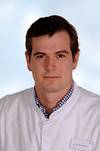Translational use of epidermal stem cells for skin regeneration
A recent treatment we carried out using epidermal stem cells (ESCs) on a young patient who was critically ill with epidermolysis bullosa led us to a highly innovative therapeutic concept: ESCs are obtained from a small skin biopsy, which have enormous potential for regeneration and reproduction. These are isolated, cultivated and processed into a transplant. Once the culture has been created, larger graft areas can be repeatedly produced, which enable the entire body surface to be covered. These transplants differ fundamentally from all transplants in clinical use. The isolated stem cells are the lifelong starting point for skin regeneration and, in contrast to keratinocytes, can guarantee permanent, regenerative defect coverage due to their reproductive potential. Their cultivation in pure culture while maintaining the stem cell capabilities is extremely demanding to this day. Therefore, the provision of ESCs in the required quality and quantity is only mastered by a small number of institutes worldwide. One of them is under the direction of our cooperation partner Professor Michele De Luca in Modena, Italy.
The patient treated by us developed a new epidermis after transplantation of the ESCs, which is far superior to a defect covering by split-thickness skin grafting. With a transplanted body surface of over 80% with participation of almost all large and small joints, there is no scarring with contractures allowing for full, pain-free movement. One year after the initial transplantation, hair growth and re-oiling of the skin can even be seen, which makes permanent daily dexpanthenol treatment, such as after split-thickness skin transplantation, unnecessary. If these results can be transferred to burn injuries, this would lead to a significantly faster and more extensive convalescence of the affected patients and thus reduce the overall treatment costs as well as accelerate or even enable full reintegration into the social environment and professional life.
Vascularized composite allograft
Treating injuries involving multiple layers of functional tissue is one of the great tasks of plastic surgery. Due to the fact that conventional reconstructive surgery in the case of pronounced defects in complex structures has its aesthetic and functional limits, the field of vascularized composite allografts (VCA) has developed. Composite tissue is the term used to describe structures that are made up of different base tissues. For example, the face and extremities contain muscles, skin, bones, tendons, cartilage, vessels, nerves and other tissues. In this context, VCA defines the transplantation of a vital functional unit (e.g. hand or face) composed of different tissues from a donor to a recipient. To date, over 200 VCAs have been performed worldwide to reconstruct a wide variety of anatomical structures such as the face, upper and lower extremities and the abdominal wall.
In close collaboration with the Center for Reconstructive & Restorative Surgery Research at Harvard Medical School in Boston, USA, our research group is investigating a microsurgical model that sheds light on the occurrence of chronic rejection reactions. The data obtained are intended to provide information about the long-term behavior of VCA transplants after a successful operation.
Establishment of a stem cell-colonized alginate implant for autologous soft tissue replacement
The project deals with the establishment of an implant made of alginate which is colonized with adipogenic stem cells and is to be used to fill in large tissue defects. Particular attention is paid to the sprouting of blood vessels into the implant (vascularization).



